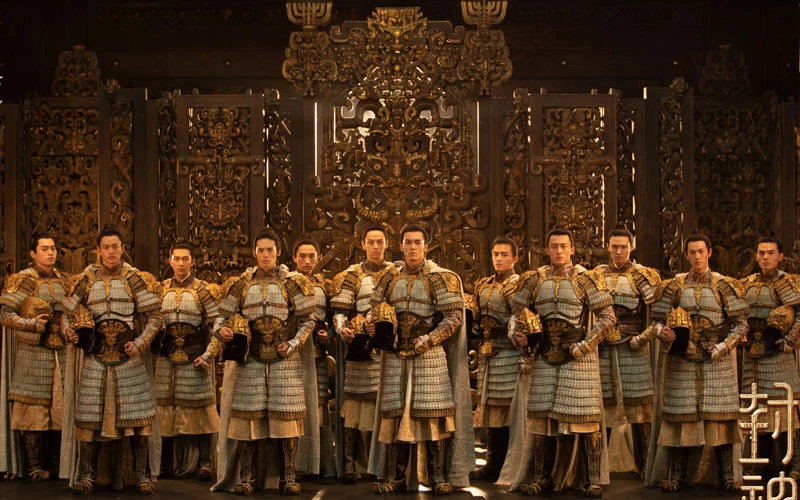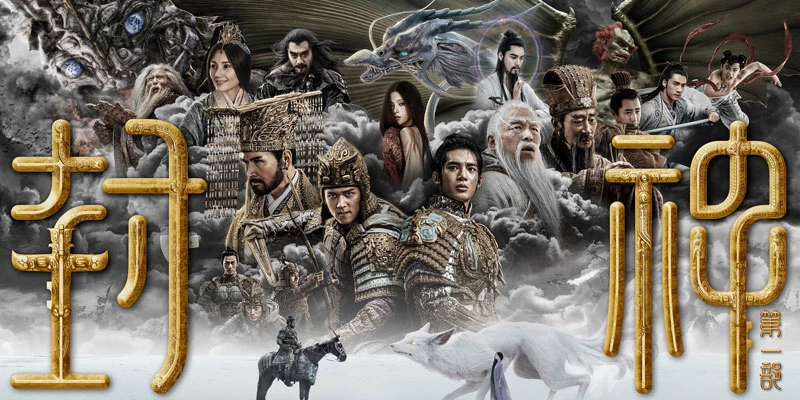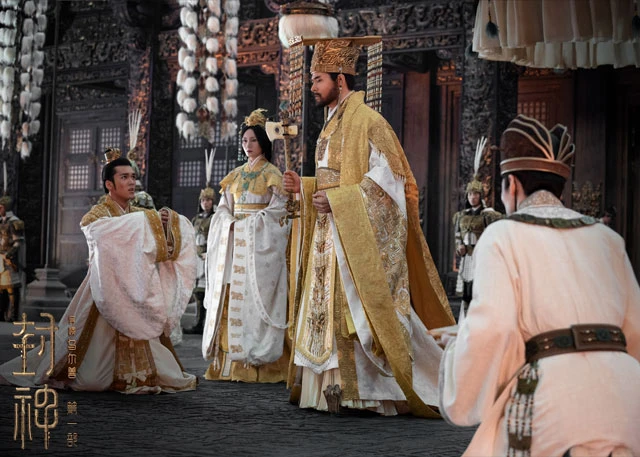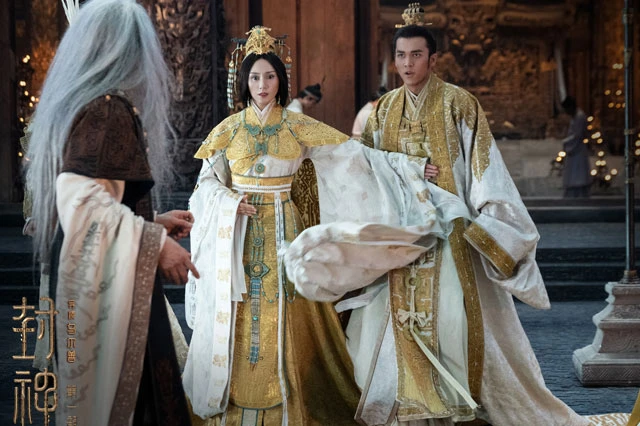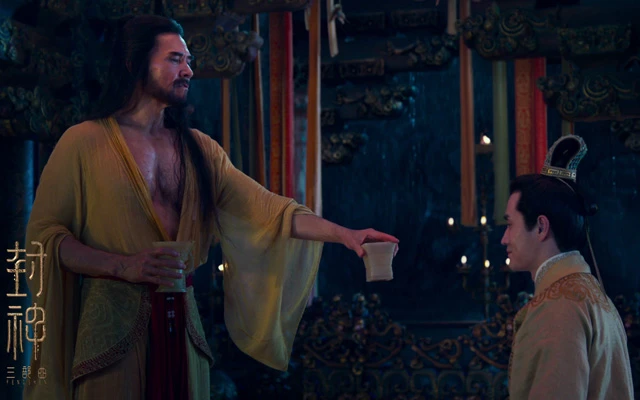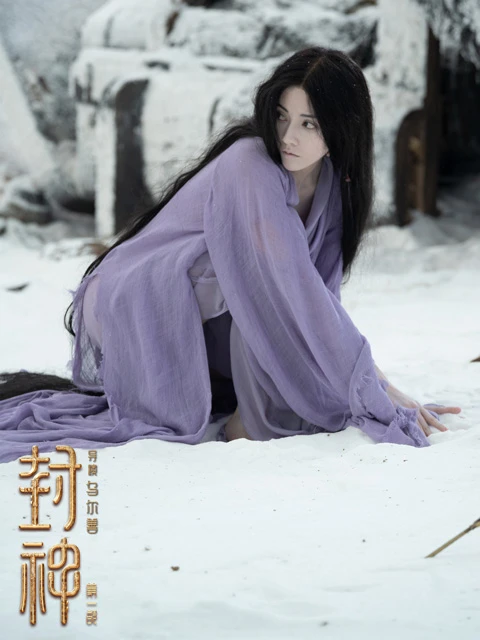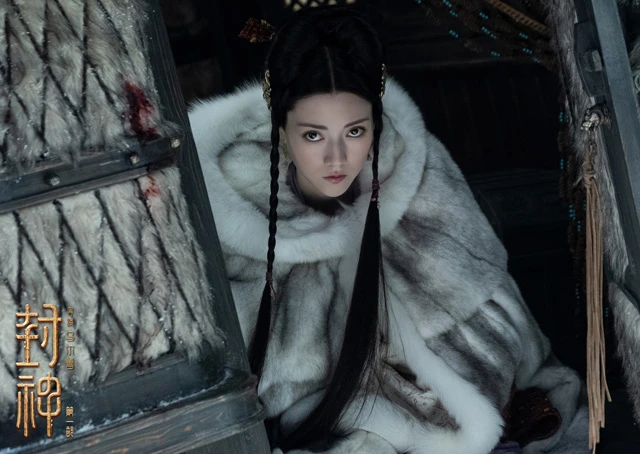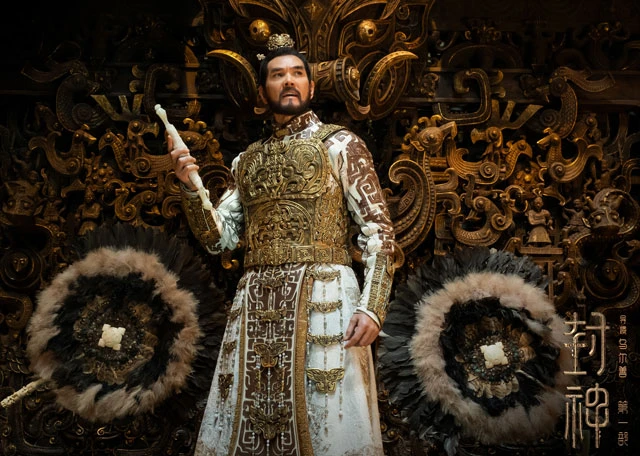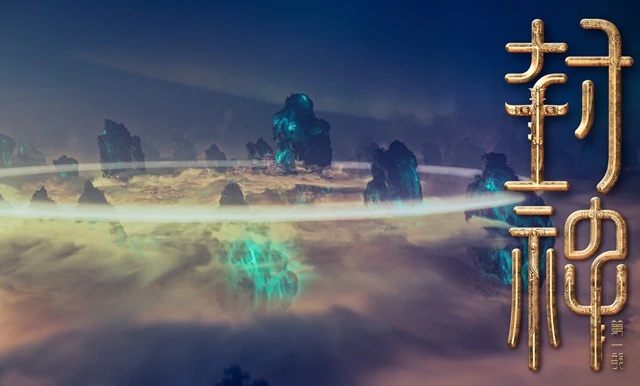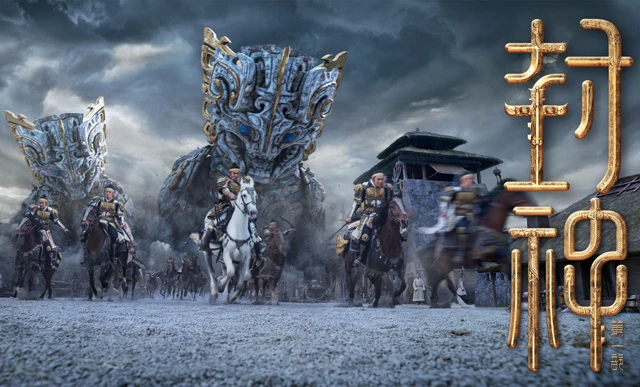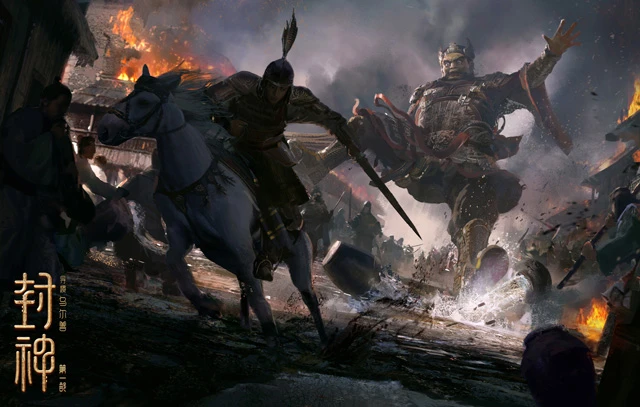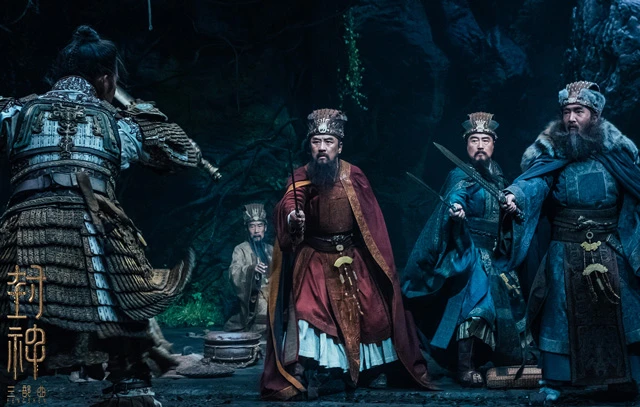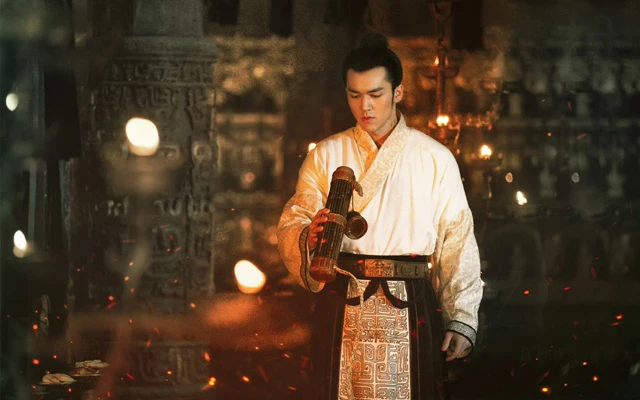A film of such magnificence and grandeur, "Creation of The Gods I: Kingdom of Storms" has been in preparation for nearly 10 years, finally makes its way to the audience. The whole crew is inevitably filled with apprehension. As a master of oriental aesthetics, Ye Jintian (Timmy Yip) has previously designed costumes for numerous films and TV productions such as "A Better Tomorrow," "Rouge," "The Banquet," and "Red Cliff." In 2001, he won the Academy Award for Best Art Direction for his work on "Crouching Tiger, Hidden Dragon," becoming the first and only Chinese person to receive this honor.
However, when Ye Jintian took on the role of art design director for the Creation of The Gods movie, it was an unprecedented challenge for him. It is the largest project in terms of workload and scale that Ye Jintian has ever encountered. With over 200 members in the art team and a set covering 500 acres, Ye Jintian designed more than 120 scenes and thousands of costumes. From the magical city of Zhaoge to the ancient kingdom of Xiqi, from primeval forests to Kunlun's fairyland; from King Zhou with his martial prowess to Daji with her enchanting beauty; from mythical creatures like Moqilin to Longxuhu - he painstakingly created a magnificent and splendid mythological epic world. Below is an interview by Wai Tan (The Bund) regarding his work on this project, presented in Ye Jintian's own words.
Costume features of Creation of The Gods
"The Investiture of Gods" story is well-known among Chinese people. However, this time we have found a completely new way to express it, along with innovative breakthroughs in character design as well. We indeed put a lot effort into bringing these characters to life; we made thousands of sets just for their costumes alone.
In our production Feixiang (Kris Phillips) portrays King Zhou Yinshou, perhaps one can say that he had the most variety in terms of costumes. He has five or six sets of formal court attire, and even his casual garments are exceptionally glamorous. We aimed to create a visually appealing, valiant portrayal of Yinshou that was distinct from all previous interpretations. The changes in his costumes also subtly reflected his descent into the abyss as he became entangled with Daji, the fox demon.
When he first ascended to the throne as king, both he and Queen Jiang wore white-based ceremonial robes adorned with intricate golden patterns that adhered strictly to ritual customs. These two outfits took the longest time to make; their jade ornaments were custom-carved from real jade stones, and it took eight or nine months just for a single cloud-shaped shoulder piece. To achieve this, we collaborated with a local heritage village dedicated to traditional handcrafted embroidery techniques, hoping to showcase more traditional craftsmanship.
As Yinshou's moral compass gradually deteriorated and destabilized the world at large, he no longer cared about ancestral rules and regulations. Therefore, you would notice that during the scene where he intends to kill Boyi Kao (son of Ji Chang), he wears an open-chested garment instead. It wasn't our intention for Feixiang to show off his physique; rather it was meant to convey how Yinshou had become wilder through each step towards damnation due to Daji's influence - someone who played havoc with him - until eventually abandoning any pretense altogether.
Dancing beside him is Daji herself wearing a vibrant red dance robe which foreshadows Boyi Kao's tragic fate while also accentuating her inner demonic aura. As Daji hails from the Su tribe characterized by nomadic culture influences, we intentionally incorporated materials woven from wool yarn into her skirt fabric composition. Six people worked simultaneously on crafting this material alone for an entire week before completing one outer gown.
The front of the costumes were adorned with knot-like decorations that exuded a primitive vibe, interspersed with jade beads and rings. The overall structure required meticulous symmetry while fully embodying Daji's seductive dance, simultaneously fragile and innocent yet captivatingly alluring. Any misstep would require starting from scratch. Amongst the three individuals participating in this platform feast scene, only Boyi Kao is dressed formally, foreshadowing his impending tragedy.
In truth, Daji's attire showcases her transformation from beast to human as well as the intrusion of her otherworldly identity into her own being, creating an eerie atmosphere. The transition from pale pink to deep red somewhat represents her inner emotions. When she first appears in Jizhou's icy landscape, she is still a young girl protected by her family and hiding beneath layers of clothing. However, once possessed by the fox demon after death, she loses herself entirely until only one undergarment remains.
Only when she gains increasing control over Yinshou does she begin wearing more intricate and complex garments; however these outfits deviate significantly from conventional norms. I wanted to convey this sense of contradiction and tragedy within her appearance: despite being inherently pure-hearted, her soul has become tainted by demonic forces; donning those clothes feels as if one is lost or doing things that aren't aligned with one's natural state. It is for these reasons that I believe she captivates people, you can see how beautiful yet wicked she is without any intention on her part.
Scene features of Creation of The Gods
In the early stages of preparing this film, our biggest challenge was how to set the overall aesthetic tone. "Investiture of the Gods" tells the story of the Shang Dynasty, but it was written by Ming Dynasty novelist Xu Zhonglin, which created many contradictions. The content in the novel may not necessarily have existed during the Shang Dynasty. For example, there was no Taoism at that time, so how could there be Taoist robes? Therefore, our aesthetic style cannot be completely based on historical accuracy; we must strike a balance.
Before officially starting production, we conducted research in various museums and ancient sites and collected a large amount of information. We ultimately decided to base our visual system on water-ink paintings from the late Yuan and early Ming dynasties, combining elements from Shang-Zhou bronzes and Song dynasty landscapes. In terms of constructing the world, there are over 120 scenes and more than 100 individual buildings in the film, including an ancient primeval forest, Nüwa Temple, Yin-Shang ancestral temple, and Deer Platform.
The Longde Palace in Zhaoge is perhaps one of our most successful sets this time around. As a symbol of power and desire, it is grandiose and magnificent with its interior reaching a height of 17 meters with intricate sculptures adorning it. Initially I hoped that it would actually be built rather than relying on CG effects like many mythological films nowadays tend to do as they can create larger-scale settings but often lack impact or authenticity similar to commercials.
For this reason alone we spent a total of seven-and-a-half months: three months for prefabricating wooden carvings and four-and-a-half months for building palaces. At its peak point during construction work there were approximately 200 master craftsmen working simultaneously on site – now thinking back I find it quite unbelievable. Once the Longde Palace was completed, standing in its center made one feel incredibly small, instantly conveying a strong sense of oppression similar to the feeling that King Yinshou gave people.
Among all the scenes, my personal favorite is actually Kunlun Mountain. However, it had too short an appearance in the first part of film; there will be more exposure in the following two parts. Although it is entirely an imaginary space, I wanted to incorporate some realistic considerations into it as well. Ultimately, I envisioned it as a mirrored world with contrasts between reality and illusion. There are mountains and water on earth as well as pavilions and towers – they exist in fairyland too.
The multitude of gods and Buddhas represent a projection of human morality at its highest standard. Therefore, for the overall style of Kunlun's fairyland we referred to Northern Song landscape paintings, especially "Thousand Miles of Mountains and Rivers", because it depicts how each person perceives the world; it reflects their inner spirit.
Mythological animal in Creation of The Gods
I have always enjoyed reading various myths since I was young so I am quite familiar with characters and storylines from "Investiture of the Gods". However, before working on this film project, it felt like watching a football game where two teams (Shang & Zhou) were competing against each other using various tactics: gaining treasures here or seeking assistance there - all making for an exciting match-up.
When Director Wuershan approached me he gave me great creative freedom to construct my own vision of magic within this story from a mythological perspective pushing boundaries further than ever before possible. However at some point he desired to bring back focus on humanity by shifting perspectives towards earthly matters such as human relationships,parent-child bonds,family ethics,and hero growth which are simple yet timeless values that should always be reflected upon rationally.
After reaching such mutual understanding, I believe that the film's visual expression should also be realistic and possess a strong sense of physicality. For instance, when it comes to ancient mythical creatures, in people's previous impressions they may have appeared ethereal upon their entrance.
However, we did not handle them this way; instead, we tried our best to establish associations with real animals and make them conform to the physical laws of the real world as much as possible. For example, the running scene of Moqilin was based on heavy horse movement. Because he has an irritable temperament, we also incorporated gestures reminiscent of wild buffalo movements so as to create a sense of authenticity.
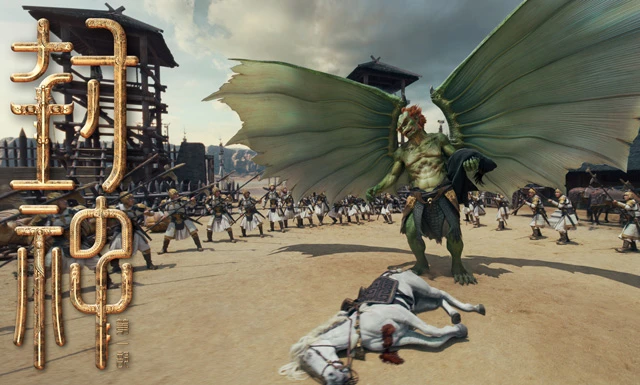
Leizhenzi
There is also a scene where Leizhenzi takes flight by flapping his wings. The visual effects team spent several months specifically studying how such a colossal creature could take off and leap into the air in order for it to appear truly airborne. Similar creative logic was applied to creating Taotie. In order to seize control over the Fengshen Scroll, Shen Gongbao transfers his soul onto two gigantic Taotie sculptures. As they run, clumps of earth fall from their bodies revealing wooden structures and straw within – ultimately leading up to their complete disintegration.
The film aims to present an immersive world for audiences,and many challenges arise from this goal: How can we make viewers believe that these never-before-seen gods and demons are genuinely real? Only by achieving this can ancient mythology from 3000 years ago resonate with modern audiences; otherwise everyone would forever view it as something unrealistic. This is why Director Wuershan refocused the story on emotions and family dynamics.The essence of mythology will always remain rooted in humanity.
The director who strives for perfection
In 2016, while I was working on the opera "Dream of the Red Chamber," Director Wu Ershan called me, hoping to collaborate on the "Divine List Trilogy." At that time, I didn't know him yet, but after listening to his ideas and plans, I felt that we could explore new possibilities for China's film industry. However, I never expected him to be so daring as to completely let go of everything and create an epic masterpiece.
Over twenty years ago, Ang Lee and I created a world of Eastern aesthetics in "Crouching Tiger, Hidden Dragon," which also had many international productions involved. But the work atmosphere was quite different from this one.
"Crouching Tiger, Hidden Dragon" brought together masters aiming to achieve something groundbreaking. Yet with Wu Ershan, it feels like he pursues even greater perfection; he himself is like a Fengshen Scroll meticulously dividing the entire world into its most flawless state. I have never participated in such an enormous project before: over 200 members in our art team alone, including more than 100 painters not counting the 600-plus prop woodworkers.
Our studio covers an area of 83 acres in Qingdao specifically built for shooting this film. Every day back then, I would ride my balance car between various studios since walking wouldn't suffice, it was too far away. It was amusing seeing a large group of people riding balance cars around like flying through Kunlun Mountains.
The "Creation of The Gods" consists of three interconnected films with a lengthy production period. Fortunately, Wuer Shan plans meticulously; when he decides what needs to be filmed within certain days, he ensures it gets done promptly, a rarity among directors.
Although there were still imperfections in the final presentation of this film, within the limits of what our entire crew could accomplish, we managed to realize our vision of the divine world in the Feng Shen. As for other achievements, sometimes I dare not think too much about them; I simply hope that the second and third parts can meet the audience soon.
